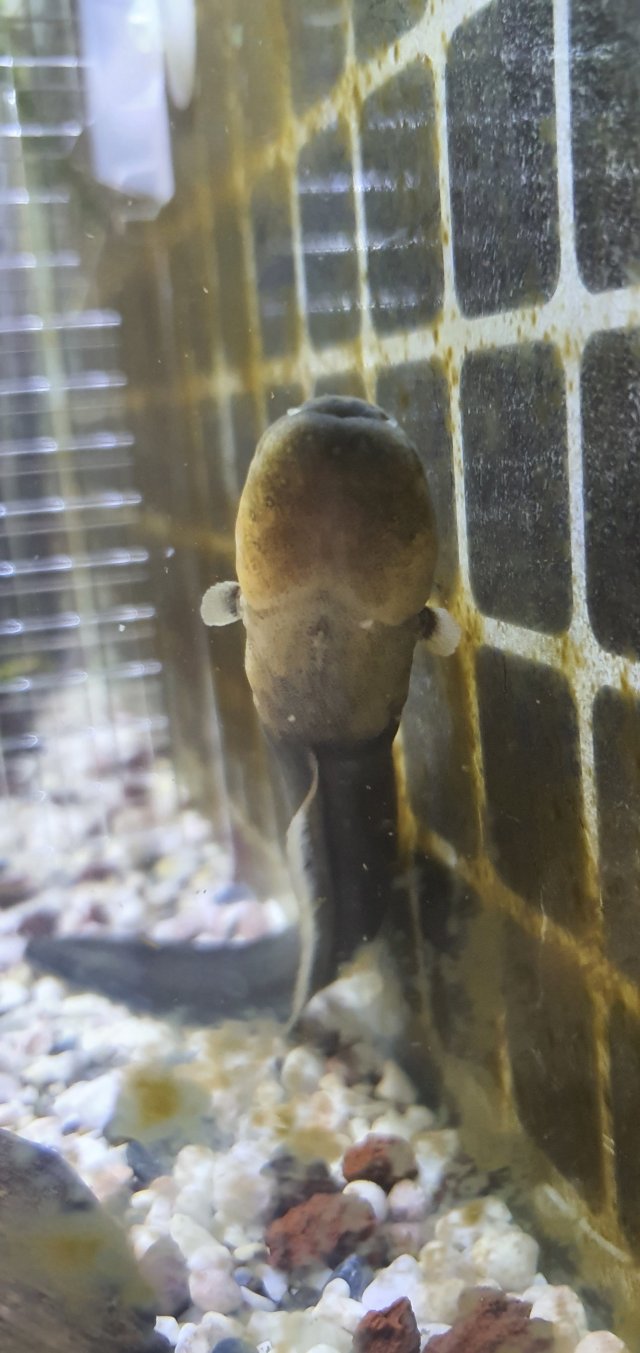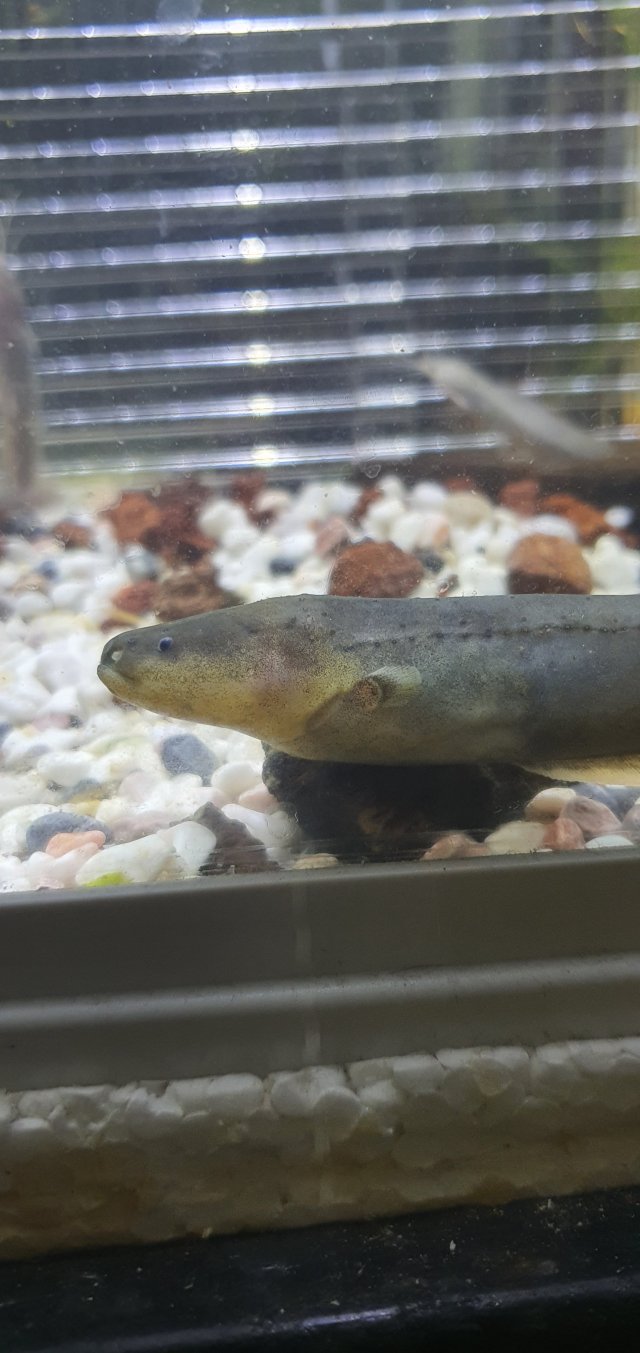Regarding the electric discharge....It's my understanding that E. voltai does not necessarily have the most powerful discharge, it is merely the species for which the highest discharge was measured. The voltage increases with length, so in order to know which one is strongest, you would need to compare multiple individuals of each species at the same size. In the most recent study, the specimen of E. voltai was twice the size of the other two species, so it's quite possible that they would deliver similar discharges at the same size.
Electric eel questions
- Thread starter Electriceels101
- Start date
You are using an out of date browser. It may not display this or other websites correctly.
You should upgrade or use an alternative browser.
You should upgrade or use an alternative browser.
While voltage increases in size it was theorized E.voltai has a stronger average discharge due to living in less conductive water but thats what I readRegarding the electric discharge....It's my understanding that E. voltai does not necessarily have the most powerful discharge, it is merely the species for which the highest discharge was measured. The voltage increases with length, so in order to know which one is strongest, you would need to compare multiple individuals of each species at the same size. In the most recent study, the specimen of E. voltai was twice the size of the other two species, so it's quite possible that they would deliver similar discharges at the same size.
Here's a very interesting article on this topic:
The 24 authors who collaborated on this paper obviously belong to the "splitter" school of biological thought, whose adherents seem to think that every subspecies, color morph, geographical variation or other slightly different version of any given species is actually a unique and distinct species in its own right. Unlike many splitters, however, these folks make a strong and convincing case for the 3-species idea.
Bearing in mind that this paper is only about three years old, it's possible that numerous keepers have kept one or both of these new species, but bought them and referred to them all as E.electricus because that was the only accepted species prior to this work. It's not as if a guy in a canoe, wearing a pith helmet and carrying a bull whip, penetrated some remote Amazonian backwater and found the first specimen of E.voltai or E.varii. "New" species like this are "discovered" in labs or museum collections, sometimes by examining and comparing type material collected and preserved years earlier. Some of the characteristics the authors described here were based on very small sampling sizes...in some cases, just one single specimen.
The sum total of my experience consists of a single solitary E.electricus (by default). I can't begin to guess about aggressiveness as it was always alone, and have no idea about breeding or sexual dimorphism. Hopefully if you ever find more info you will update this thread?
The 24 authors who collaborated on this paper obviously belong to the "splitter" school of biological thought, whose adherents seem to think that every subspecies, color morph, geographical variation or other slightly different version of any given species is actually a unique and distinct species in its own right. Unlike many splitters, however, these folks make a strong and convincing case for the 3-species idea.
Bearing in mind that this paper is only about three years old, it's possible that numerous keepers have kept one or both of these new species, but bought them and referred to them all as E.electricus because that was the only accepted species prior to this work. It's not as if a guy in a canoe, wearing a pith helmet and carrying a bull whip, penetrated some remote Amazonian backwater and found the first specimen of E.voltai or E.varii. "New" species like this are "discovered" in labs or museum collections, sometimes by examining and comparing type material collected and preserved years earlier. Some of the characteristics the authors described here were based on very small sampling sizes...in some cases, just one single specimen.
The sum total of my experience consists of a single solitary E.electricus (by default). I can't begin to guess about aggressiveness as it was always alone, and have no idea about breeding or sexual dimorphism. Hopefully if you ever find more info you will update this thread?
Thats the articleHere's a very interesting article on this topic:
The 24 authors who collaborated on this paper obviously belong to the "splitter" school of biological thought, whose adherents seem to think that every subspecies, color morph, geographical variation or other slightly different version of any given species is actually a unique and distinct species in its own right. Unlike many splitters, however, these folks make a strong and convincing case for the 3-species idea.
Bearing in mind that this paper is only about three years old, it's possible that numerous keepers have kept one or both of these new species, but bought them and referred to them all as E.electricus because that was the only accepted species prior to this work. It's not as if a guy in a canoe, wearing a pith helmet and carrying a bull whip, penetrated some remote Amazonian backwater and found the first specimen of E.voltai or E.varii. "New" species like this are "discovered" in labs or museum collections, sometimes by examining and comparing type material collected and preserved years earlier. Some of the characteristics the authors described here were based on very small sampling sizes...in some cases, just one single specimen.
The sum total of my experience consists of a single solitary E.electricus (by default). I can't begin to guess about aggressiveness as it was always alone, and have no idea about breeding or sexual dimorphism. Hopefully if you ever find more info you will update this thread?
https://books.google.com/books?id=Gzc2DwAAQBAJ&pg=331#v=onepage&q&f=false (source 1 where males get larger)
https://kidadl.com/animal-facts/electric-eel-facts (source 2 where male get larger)
https://www.justagric.com/what-do-electric-eels-eat/ (source 1 where females get larger)
https://www.activewild.com/electric-eel-facts/. (Source 2 where females get bigger)
https://kidadl.com/animal-facts/electric-eel-facts (source 2 where male get larger)
https://www.justagric.com/what-do-electric-eels-eat/ (source 1 where females get larger)
https://www.activewild.com/electric-eel-facts/. (Source 2 where females get bigger)
Thanks for the link I had read that thread in preparation for thisTbh I don't know but it's worth a try. Also was thinking that on their website maybe send via email.
I think that the word "aggressive" is one of the last ones that I would use to describe a captive electric eel. If anything, in my experience, they are CURIOUS. I regularly have to put my hands in with mine and it will almost immediately take notice and will come to investigate. I don't think that they are capable of malice, look at their face.




